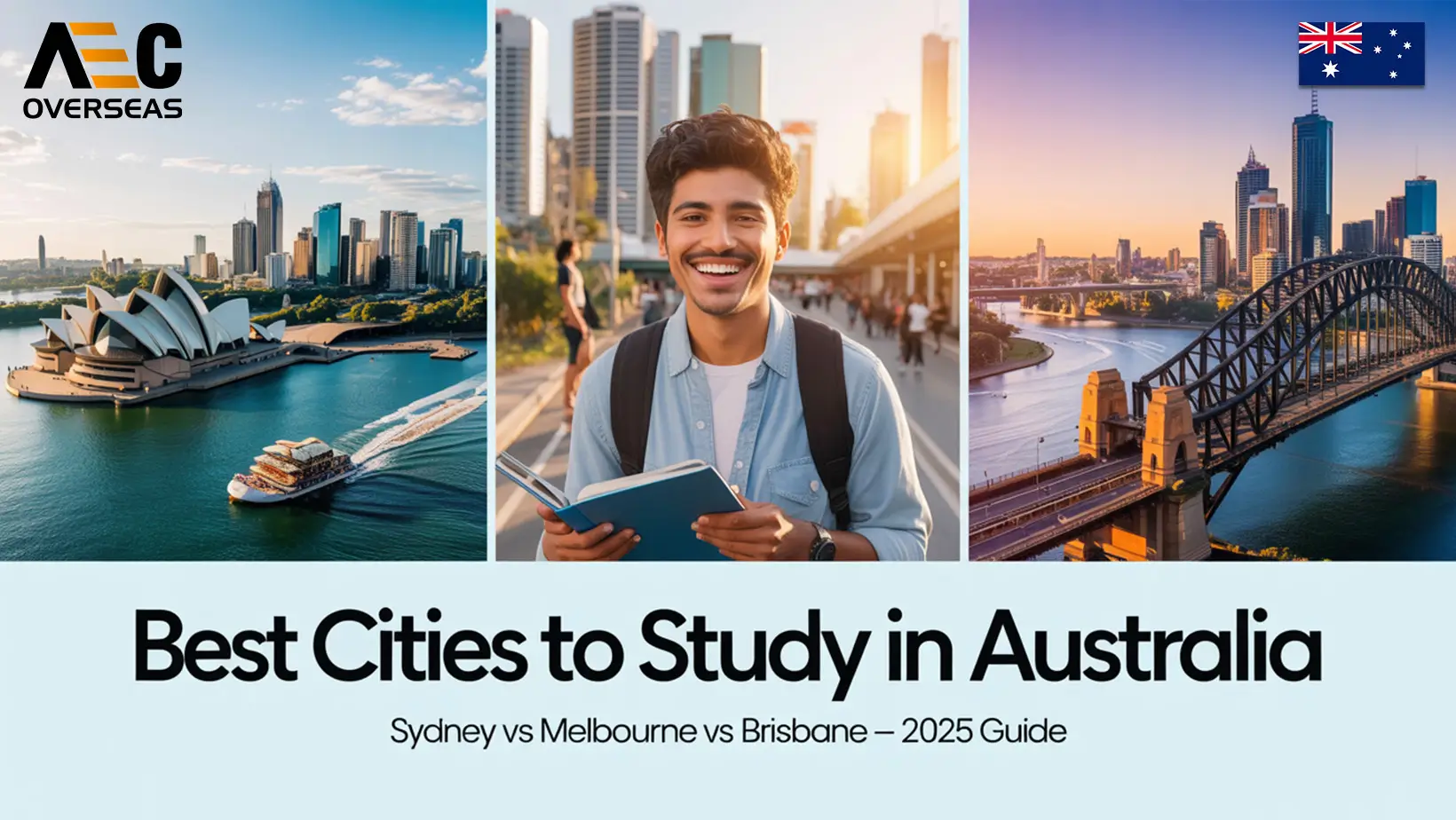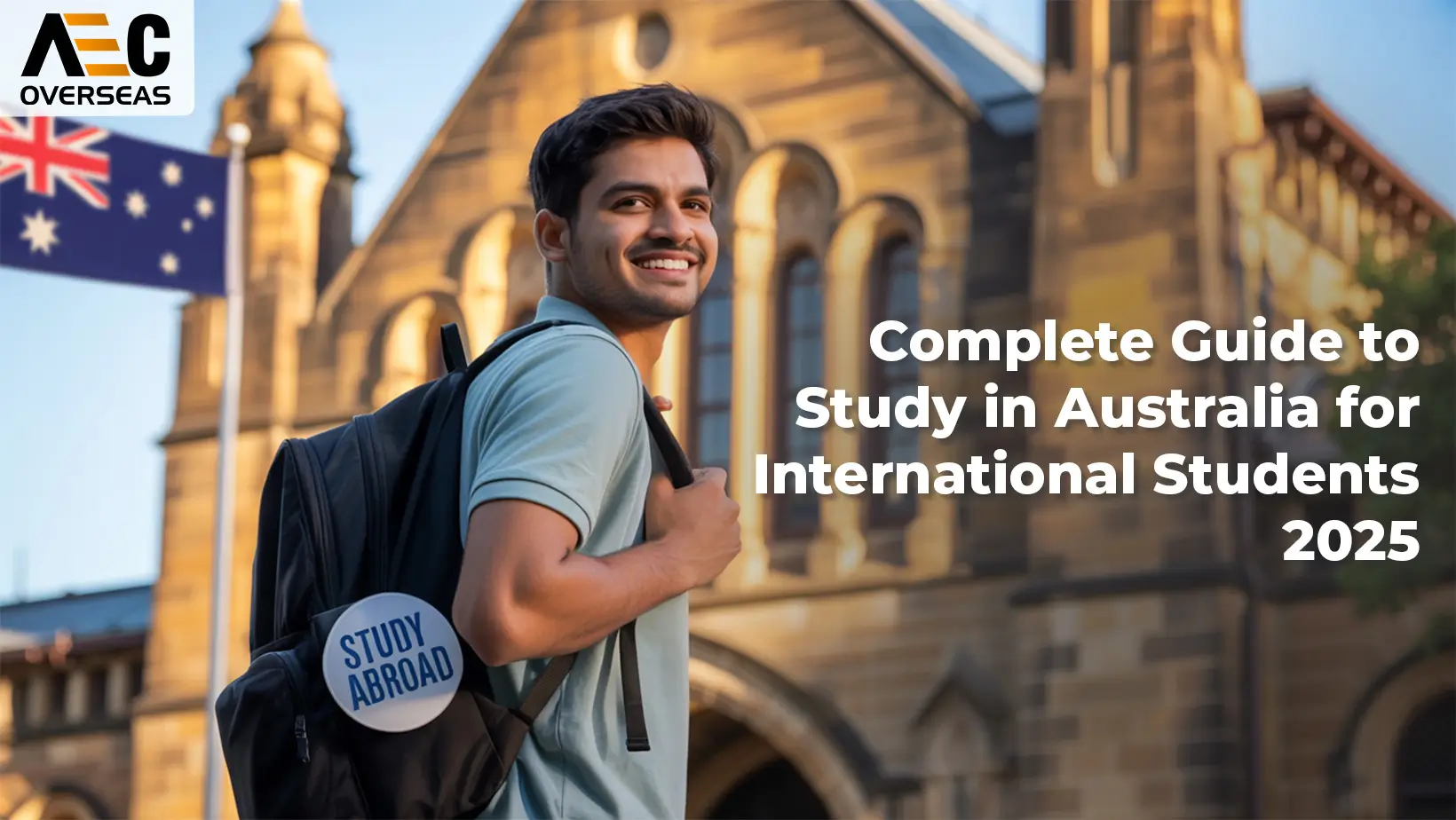Australia is a top destination for international students – but the cost of living can be a challenge if you’re unprepared. From rent and food to health insurance and weekend fun, student expenses in Australia vary widely across cities.
In this guide, you’ll get a city-by-city cost breakdown, monthly expense estimates, and practical tips for budgeting smartly. Whether you’re heading to Sydney or settling in Adelaide, this blog will help you financially prepare to study in Australia stress-free.
Get Free Counseling on WhatsApp
Start ChatWhy Understanding Cost of Living in Australia Is Crucial for International Students
Common Financial Mistakes by International Students
Many students face financial stress because they:
- Underestimate hidden costs like transport, medical expenses, or utilities.
- Overspend in the first few months before adjusting to local prices.
- Rely solely on part-time jobs without a financial cushion.
Planning ahead can prevent surprises and keep your academic journey smooth.
Ready To Study Abroad?
Speak to an Expert – 100% Free
Importance of Budgeting Before You Move
Creating a budget before moving helps you:
- Estimate realistic monthly expenses
- Choose the right city based on affordability
- Prioritize spending and avoid debt
Budget planning in Australia isn’t optional—it’s your financial survival plan.
Factors Influencing Cost of Living in Australia
Accommodation (On-campus vs Off-campus)
- On-campus: Generally includes bills and offers proximity to university.
- Off-campus: Offers flexibility and may be cheaper in regional cities.
Average Monthly Rent (AUD):
- Sydney: $350–$550
- Adelaide: $200–$350
Shared housing helps cut costs significantly.
Food and Groceries
Monthly grocery costs:
- $250–$400 depending on city and diet.
Cooking at home saves money compared to eating out, where one meal can cost $15–$25.
Transportation and Travel Passes
City transport varies:
- Sydney & Melbourne: ~$120/month for Myki or Opal
- Adelaide & Perth: ~$60–$80/month (student discounts available)
Many universities also offer shuttle buses or transport subsidies.
Utilities and Internet
If not included in rent:
- Electricity, Gas, Water: $60–$100/month
- Internet: $50–$70/month
Bundle packages or shared Wi-Fi can reduce costs.
Health Insurance & Medical Expenses
Overseas Student Health Cover (OSHC) is mandatory:
- $500–$600/year on average
Additional out-of-pocket expenses may apply for dental or specialist visits.
Entertainment and Lifestyle
Monthly average:
- Gym: $30–$70
- Movies: ~$20/ticket
- Outings: $50–$100 depending on lifestyle
Sticking to a student budget doesn’t mean cutting out fun—it just means being smart about it.
City-Wise Comparison – Cost of Living in Top Australian Cities (2025)
| City | Avg Monthly Rent | Transport | Total Monthly Cost |
| Sydney | $400–$550 | $120 | $1,800–$2,200 |
| Melbourne | $350–$500 | $110 | $1,600–$1,900 |
| Brisbane | $300–$450 | $90 | $1,400–$1,700 |
| Adelaide | $250–$400 | $80 | $1,200–$1,500 |
| Perth | $280–$420 | $85 | $1,300–$1,600 |
| Canberra | $320–$450 | $100 | $1,400–$1,700 |
Sydney – Australia’s Most Expensive Student City
- High rent and transport costs
- Diverse job market and premium lifestyle
- Estimated cost: $1,800–$2,200/month
Melbourne – Cultural Capital with Moderate Expenses
- Excellent student support and transit systems
- Slightly more affordable than Sydney
- Cost: $1,600–$1,900/month
Brisbane – Balanced Lifestyle with Affordable Living
- Warm climate and relaxed vibe
- Cheaper rent, good student network
- Cost: $1,400–$1,700/month
Adelaide – Budget-Friendly for Students
- Low housing and transportation costs
- Ranked as one of the cheapest cities to study in Australia
- Cost: $1,200–$1,500/month
Perth – Quality Living at Mid-Range Cost
- Beautiful coastal city with solid infrastructure
- Cost: $1,300–$1,600/month
Canberra – Capital City with Manageable Expenses
- Less crowded, student-focused city
- Cost: $1,400–$1,700/month
Cheapest Student Cities in Australia – Regional Options
- Hobart, Darwin, and Townsville offer lower rent
- Regional study also helps with post-study work visa extensions
Monthly Budget Planning Guide for International Students
Sample Budget Table (Low/Mid/High Range)
| Expense | Low (AUD) | Mid (AUD) | High (AUD) |
| Rent (Shared) | 250 | 400 | 550 |
| Groceries | 200 | 300 | 400 |
| Transport | 60 | 90 | 120 |
| Utilities/Net | 50 | 80 | 100 |
| Entertainment | 50 | 80 | 120 |
| Health Insurance | 45 | 50 | 60 |
| Total | 655 | 1,000 | 1,350 |
Cost-Saving Tips for Students
- Share accommodation with roommates
- Cook at home instead of eating out
- Use student discounts for transport and events
- Buy used textbooks or access university libraries
- Limit unnecessary subscriptions
Scholarships and Part-Time Jobs to Support Your Budget
- Apply for university scholarships or bursaries
- Work up to 48 hours per fortnight during term (and full-time in breaks)
- Look for jobs in retail, hospitality, or on-campus roles
Explore our 🔗 Study in Australia Success Stories to see how other students balanced work and study!
Using “Study Abroad Consultants” for Financial Planning
A trusted 🔗 Study Abroad Consultant can help you:
- Select affordable cities and universities
- Estimate pre-arrival and monthly costs
- Plan for visa, health cover, and more
Common Questions on Cost of Living for International Students
What is the average monthly living cost for international students in Australia?
Most students spend between AUD 1,200 to AUD 1,800 per month, depending on the city and lifestyle.
Which city is the cheapest for students in Australia?
Adelaide and regional cities like Hobart or Darwin are often the cheapest due to low rent and transport costs.
How much should I budget for rent and food in Australia as a student?
- Rent: $250–$550/month depending on location
- Food: $250–$400/month if cooking at home
Can I work while studying in Australia to cover my living expenses?
Yes! International students can work up to 48 hours per fortnight during term time and unlimited hours during vacations.
Plan Your Budget, Live Smart – Start Your Study in Australia Journey Today!
Ready to make your dream to study in Australia a reality?
✅ Comment below with your target city or experience
✅ Share this post with a friend planning their journey
✅ Need help? Talk to our expert 🔗 Study Abroad Consultants for personalized financial advice
Smart planning today leads to stress-free student life tomorrow.
FAQs on Australia Living Cost for International Students
Q1. How much money do I need to live in Australia for a year as a student?
You’ll need approximately AUD 15,000 to AUD 22,000 per year depending on your city and lifestyle.
Q2. Is it cheaper to live on campus or off-campus in Australia?
Off-campus shared housing is usually cheaper, but on-campus includes bills and is more convenient.
Q3. What is the most affordable city in Australia for international students?
Adelaide and regional cities like Hobart are the most budget-friendly.
Q4. How can international students save money while studying in Australia?
- Share housing
- Cook meals
- Use student discounts
- Find part-time work
Q5. Is health insurance included in living expenses for students in Australia?
Yes, but you must purchase OSHC separately, and it typically costs around AUD 500–600/year.
Conclusion
Understanding the cost of living in Australia is key to a successful student life. From city comparisons to budget tables, this guide covered everything you need to plan smartly. Whether you’re dreaming of Sydney’s skyline or Adelaide’s affordability, make sure your finances are in order before you start your journey to study in Australia.
Want personalized advice? Connect with our expert 🔗 Study Abroad Consultants today!







